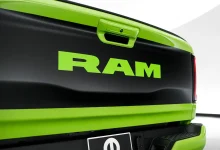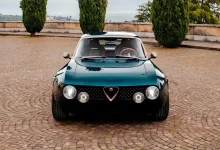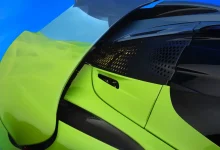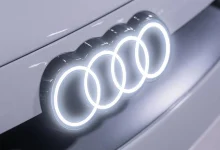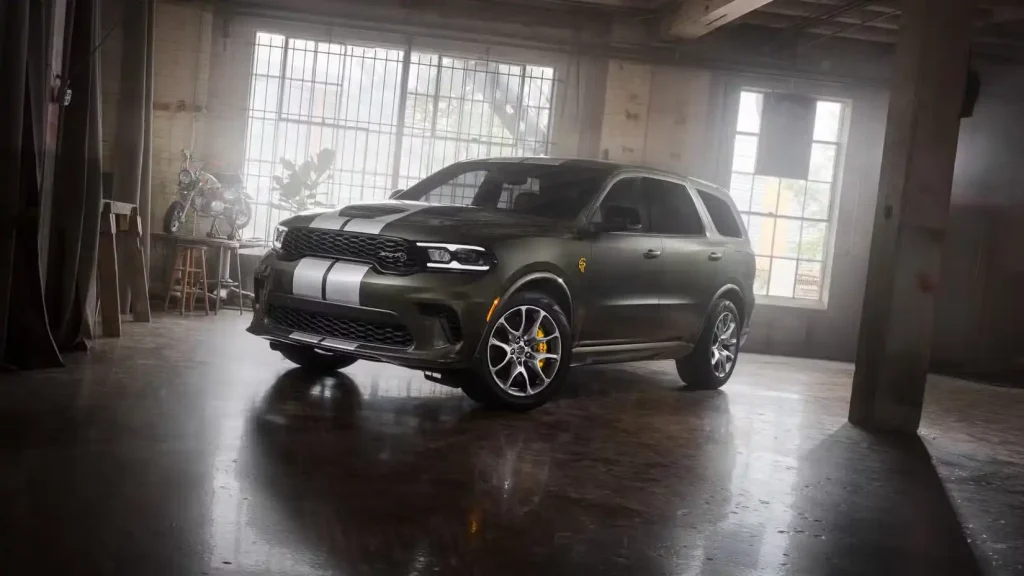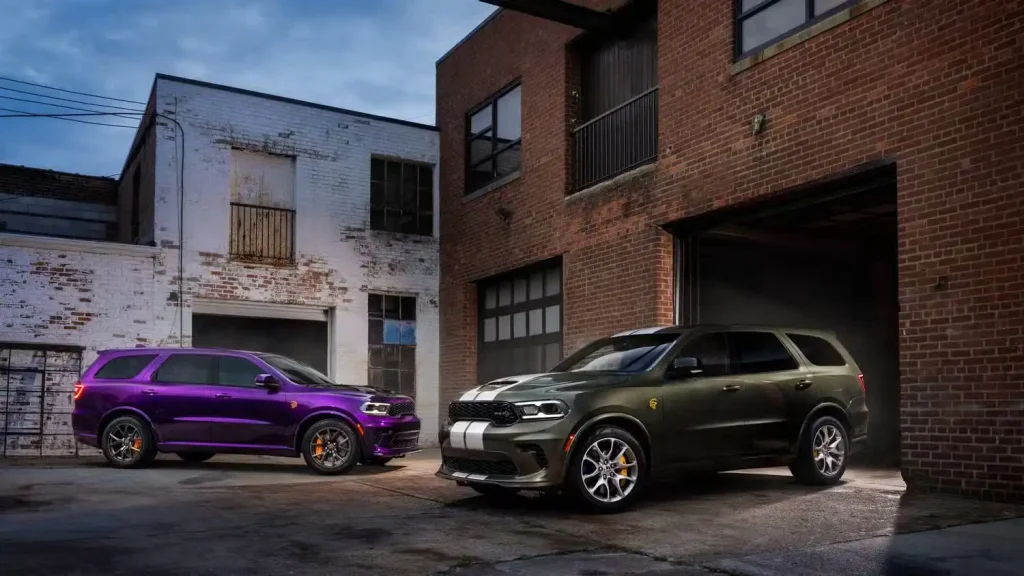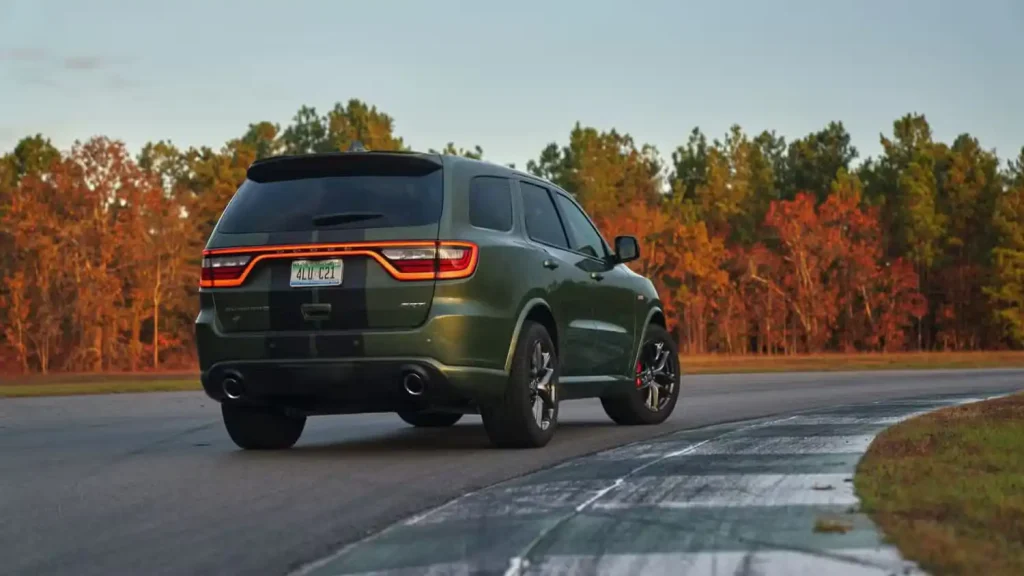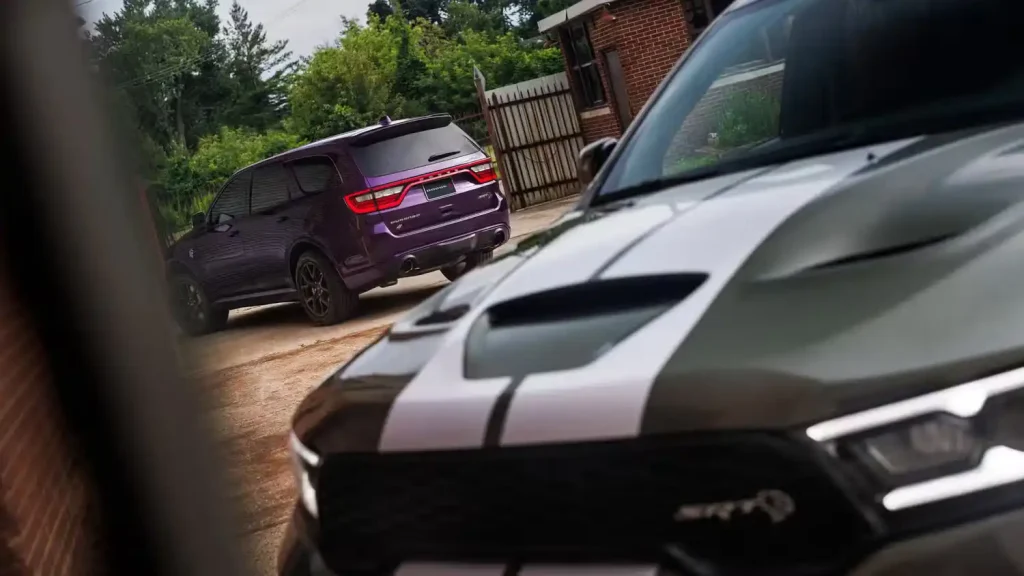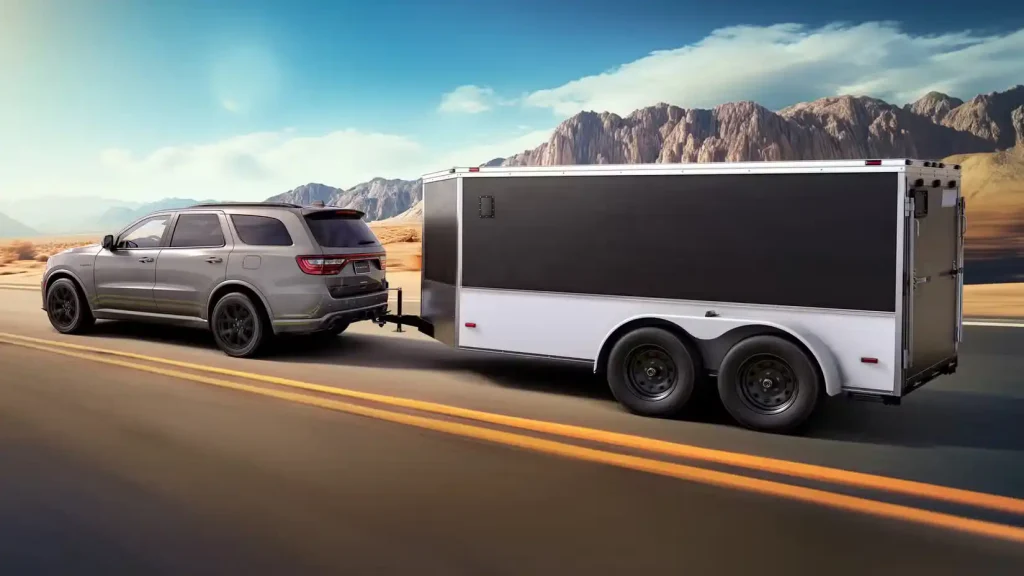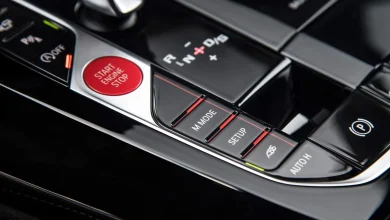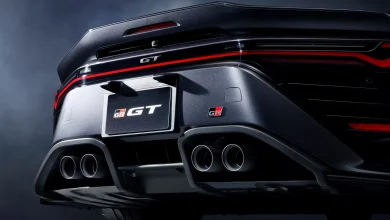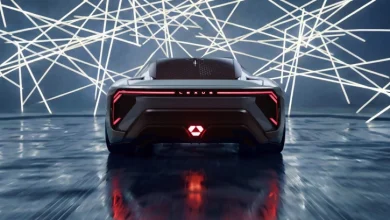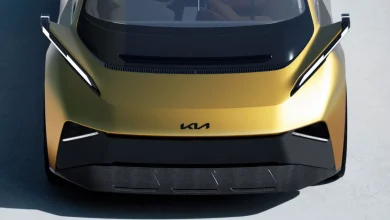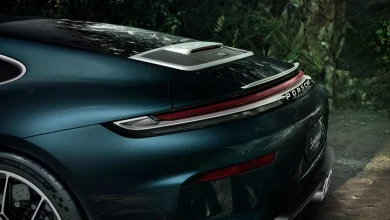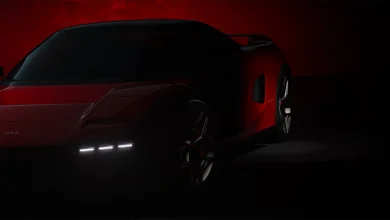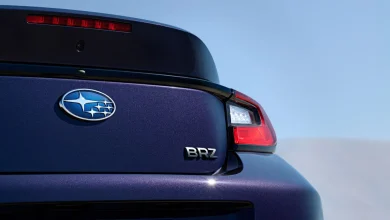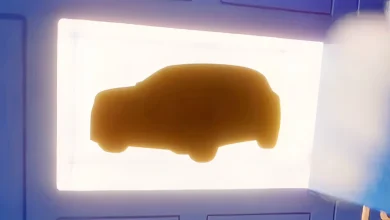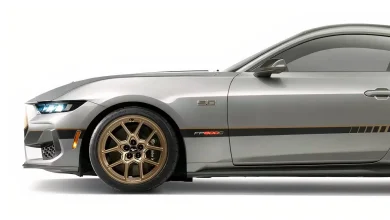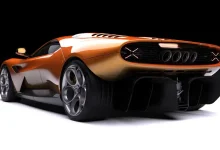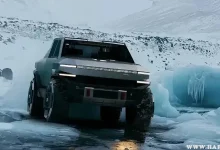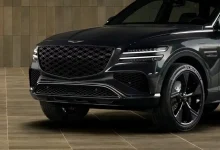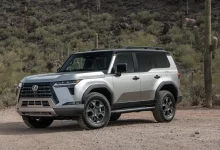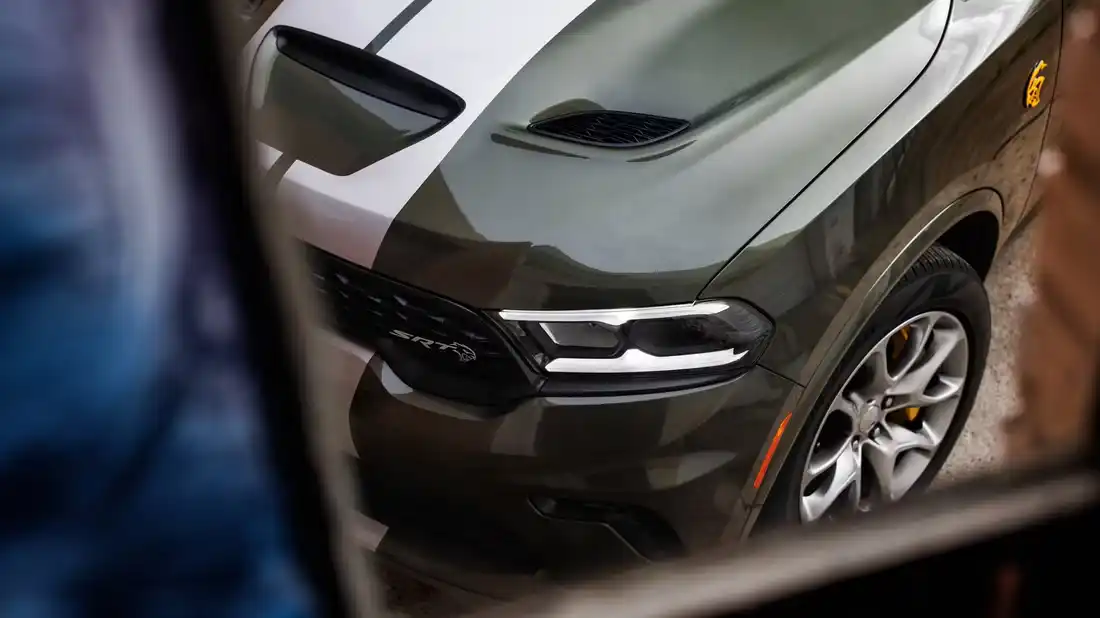
Stellantis is making a bold return with the Hemi V8. The iconic engine will once again power the 2026 Ram 1500, and the company is phasing out the 3.6-liter Pentastar V6 in the base Dodge Durango GT, replacing it with a 5.7-liter V8. To emphasize the sportier character of the R/T trim compared to the GT, it will now feature a 6.4-liter Hemi V8. Meanwhile, the Durango Hellcat is back, packing a supercharged 6.2-liter V8. That said, it appears the high-performance Durango models may not be available in states that follow California Air Resources Board (CARB) emissions standards.
Varying Standards for New Cars
The reason these high-performance engines won’t be widely available is that neither the 6.4-liter V8 (also called the 392, referencing its cubic-inch displacement) nor the Hellcat V8 meet the California Air Resources Board’s (CARB) current emissions regulations, which took effect for the 2022 model year. As a result, 2021 marked the final year a Dodge Durango with a 392 or Hellcat engine could be sold in CARB-compliant states. Dodge has continued to offer these larger V8s in regions with less stringent emissions requirements.
It seems improbable that Stellantis will invest in recertifying the 6.2- and 6.4-liter V8 engines for CARB-compliant Durangos. This means the GT trim—equipped with the 5.7-liter V8—will likely be the only version available in those states. Fortunately, that engine already meets California’s current emissions standards, thanks to its use in previous R/T models, allowing Dodge to continue offering it without major changes.
Which States Have Adopted CARB Emissions?
California received a special waiver from the federal government in 1967, allowing it to set its own emissions regulations to address severe smog issues. In response, the California Air Resources Board (CARB) was established. Over time, the state implemented stricter standards for greenhouse gases and particulates, forcing automakers to either withdraw certain models from California dealerships or develop vehicles with state-specific emissions systems.
Over time, 17 additional states have opted to adopt some or all of California’s CARB emissions standards. These include Colorado, Connecticut, Delaware, Maine, Maryland, Massachusetts, Minnesota, Nevada, New Jersey, New Mexico, New York, Oregon, Pennsylvania, Rhode Island, Vermont, Virginia, and Washington. As a result, it’s unlikely that the Dodge Durango equipped with the 392- or Hellcat-powered V8 will be sold as a new vehicle in these states.
That said, consumers in CARB states can still obtain a Dodge Durango R/T or Hellcat as a used vehicle. Regulations vary by state, but in California, for instance, late-model cars not originally sold there must have at least 7,500 miles on the odometer before they can be legally registered. This effectively limits “gray-market” purchases from out-of-state dealers, such as those in Arizona.
Still a V8-Heavy Lineup for the Durango
The downside for enthusiasts is that those eager for a new Dodge Durango Hellcat may need to wait longer before one becomes available on the used market. On the upside, the entry-level GT still delivers a robust 360 horsepower and 390 pound-feet of torque, all for a base price well under $50,000. That makes it an appealing option for buyers who might otherwise be stuck with a less powerful V6 crossover.
